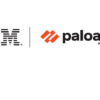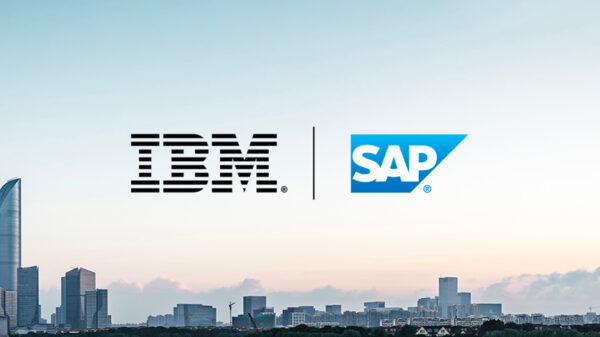By Zelda Anthony, Payments Leader, IBM Asia Pacific
There is a great deal of change and innovation in the payments area at present, this article focuses on some of the top trends in payments and how IBM’s ASEAN banking customers are reacting to them.
- Central Bank and Government desire to move away from cash
Many central banks around the world have programs aimed at reducing their countries’ dependency on cash, with some in Northern Europe having already made good progress toward this end. Among the key reasons for wanting to reduce cash usage are the cost of producing and managing physical cash in a society, to reduce crime and to increase financial inclusion within the population thereby leading to wider tax collection and easier disbursement of subsidies to the under-privileged.
In general, cash is on the retreat and alternative payment methods are gaining traction e.g. cards, mobile apps, wallets and wearables, however, in most countries there is still a long way to go so Central Banks and Governments are introducing initiatives to help to increase the usage of e-payments as can already be seen in ASEAN countries.
Some of IBM’s bank customers view these initiatives as a potential threat since the market is opening up to new, non-bank, competitors and therefore they see the need to adapt their offerings to match the innovation of these competitors to meet the increasing expectations of their customers, others are seeing it as an opportunity to extend their market share to reach new target customers e.g. the currently un-banked.
- Immediate payments
Globally, more than 35 countries have implemented or have plans to implement immediate payments systems including countries in ASEAN. These systems improve the speed, cost and security of payments for merchants and consumers as well as encouraging accessibility and faster innovation.
In some markets in Europe, with the UK leading, real-time direct-to-account payment solutions are already becoming the norm and domestic payment system operators in the US, Canada and APAC also have plans to overhaul their systems.
The immediate payment systems initiative supports the Government and Central Bank e-payment initiatives through improving the underlying payment market infrastructure enabling faster and more efficient e-payments products.
IBM’s ASEAN banking customers are examining what they need to do to adapt their own payment infrastructures to meet the mandatory requirements of the new market infrastructure. IBM is helping them to do this as well as looking at using the opportunity to introduce new products and services to banks’ customers e.g. leveraging the additional information contained in an ISO20022 payment message (if this is being implemented by the market infrastructure) to provide new products to their customers and looking at how the changes in immediate payments can complement their overall digital banking strategy.
- Regulators: Encouraging market competition and Innovation
There is increasing customer expectation and demand for faster payments and an omni-channel, innovative experience. New payments players are entering the market and there is a need to ensure a level playing field for all as well as the need to ensure security and data privacy. All this means that Regulators are continually needing to think about and to develop guidelines and frameworks for the ever changing payments industry.
The key focus areas for Regulators today include how to help foster innovation, how to effectively and fairly open up the market to non-bank payment players and how to implement standardization
Regulators are also considering the implications of new technologies such as distributed ledger, tokenization and NFC for the industry. In certain cases, like Blockchain, the Central Banks are considering how value-added, innovative technologies might provide benefits for them too, such as considering Blockchain for implementing a digital currency, however, these are early days.
IBM’s ASEAN banks are looking at how to comply with regulation in different markets and IBM is supporting them through providing services and technology to implement the changes needed.
- Payment processing and front end transformation
Traditional payments companies, burdened with legacy systems, silos and a traditional banking culture and talent are finding the need to adapt to meet the new challenges and opportunities of the changing payments landscape.
Globally, banks are looking at how to streamline and improve their payments infrastructure with an end to end transformation, evaluating and implementing solutions such as payment hubs, cloud-based data warehousing and application program interfaces (APIs). They are also looking at speeding up solutions development and launch as well as implementing periodic reliability assessments.
Front-end innovation is also gathering pace with developments in both retail and merchant front-ends, mobiles and social platforms, all of which are contributing to the new multi-channel experience for customers.
IBM is assisting its ASEAN banks by helping them to assess the current state of their architecture and processes, to develop a blueprint for the new state, a business case to implement it and support as needed for the implementation, managing and maintenance of the new payments architecture.
- Increased security: Tokenization and Authentication
As a result of concerns over increasing costs and reputational concerns, merchants’ and banks’ investment to prevent fraud and resist cyber-attacks is at an all-time high.
Data ownership and privacy have also become major strategic considerations for consumers and merchants alike and in 2016 technologies such as tokenization and biometric authentication will have a strong influence on the payment industry.
Tokenization is expected to become the strongest deterrent to digital card fraud and a vital complement to end-to-end encryption/point-to-point encryption. Tokenization is a method of securing credit card data whereby the credit card numbers are substituted by tokens. While the original number is stored securely on a tokenization server, only the tokens are used throughout the payment process. This means that no harm can be done if the tokens are stolen and therefore makes it a more secure process.
There are also new ways of authenticating payment processes; not only including password and PIN but also voice recognition, keystroke detection, fingerprint and pulse scanners, often combined in a dual authentication process. We are likely to see much more of these technologies which will not only increase security but will also increase convenience for consumers and merchants.
IBM is helping its ASEAN bank customers to understand the choices available and to implement the new tokenization and authentication security technologies as part of the wider bank security strategy.
- Payments Market disruptors
Banks globally are seeing many disruptors entering the payments market. They are concerned as payment related revenue typically represents around 40% of a bank’s revenue and this revenue is under threat.
In peer-to-peer (P2P) payments, for example, digital innovators such as Pay-Pal, Alipay, TransferWise and Venmo, have entered the market and although P2P is not often seen as being of key importance to banks, these disruptors are providing products and services far beyond authorization, clearing and settlement and are threatening to gain customers from traditional banks.
Large Telcos in many markets leverage payments as a way to deepen their share of wallet with customers as an adjunct to their core offering and to help to retain their phone service customers.
The innovators employ cross-selling (e.g. booking, ordering, shopping, gifting, donating) and market insights derived from payments and browser data (e.g. for event-based offers, promotions and marketing) to attract new customers and then retain them
Banks, both in ASEAN and globally are reacting to the non-bank disruptors by developing and implementing their own digital banking and innovation strategies to solidify their core business and to build market share through developing a more compelling customer experience. IBM is working with its customers to develop and implement a winning, competitive strategy for them.
- Focus on the client experience
2016 is set to be a defining year for mobile payment providers. Apple Pay and Samsung Pay are being launched in additional countries and Google is also pushing for first place in the mobile payment space. In addition, new technologies such as smartwatches, bracelets and even rings are being introduced as payment options.
Consumers will increasingly use their phones, tablets and computers to shop anytime, anywhere and merchants will need to keep track of individual consumers across different channels—online, mobile, proximity—to ensure a consistent consumer experience. In order to stay in touch with the consumer at each step of the purchasing process merchants will forge partnerships and alliances with data analytics specialists and digital innovators.
In order to keep up with merchant requirements, payments providers are looking at how to deliver integrated, multichannel solutions that combine, for example, preauthorization, split payments and customer analytics across channels.
Digital wallets also have a key role to play and are being developed to include value-added services such as loyalty points, gifts, warranties and store coupons and loyalty points.
IBM is helping its ASEAN bank customers through its Interactive Experience (IX) team to focus on improving their own client experience and to help them to provide new, innovative solutions for their retail and SME customers to help them to attract and retain customers in a competitive environment.
- Big Data and Analytics
The ability to effectively extract value from data is becoming a core competitive requirement in the multichannel commerce of today and banks are looking at how to use data analytics to know and understand their customers better and to be able to deliver new value-added services for their retail and corporate customers.
Technology has the ability to capture and process data across different channels in different formats at each step of the value chain and then provide real-time insights into the needs and preferences of retail consumers, SMEs or large corporations. This means that easily tracking what is working and not working and tailoring products to meet the needs and interests of customers is now a reality.
The analysis of key data grants the ability to dynamically steer the business in specific customer segments e.g. regarding risk appetite, pricing and spending requirements. It allows behavior driven marketing including targeted campaigns and cross-selling as well as enabling processes such as on-boarding and security improvement to be simplified.
IBM is helping ASEAN banks to collect and analyze their data to give real, meaningful, insights into their businesses and is helping to formulate successful strategies to help to grow the banks’ business and retain customers.
- Blockchain / Distributed Ledger technology
Blockchain, or distributed ledger technology, is expected to be a key driver of disruption across the financial services industry.
In Blockchain technology each transaction generates a “block” containing an authenticated history of all prior transactions in the network, it connects participants in a marketplace without intermediaries.
Leading financial institutions, including market infrastructures are exploring the capabilities of distributed ledger technology to see how it could help to provide a collaborative, transparent architecture to increase the efficiency, security, speed and security for particular use cases.
IBM is helping its banking customers in ASEAN to understand distributed ledger technology, use cases that are being developed in the industry and to work in partnership with banks to see how the technology can provide benefits to their organization.
- Innovation and Partnering
As transformation of the banking industry continues, banks are realizing that to avoid losing customers, market share and payments revenue they can no longer sit back but need to consider the benefits of working together with new players in the payments industry. Partners such as Fintech companies and Telcos can deliver innovative solutions and superior customer experiences to an increasingly digital consumer.
Regarding Fintechs, Banks appreciate the advantages Fintechs have of not having to work with old, legacy operating systems thereby providing the agility to bring new products and services to market much more quickly and easily. The Fintechs also often have a better understanding of today’s new technologies and how they can be deployed to meet changing customer needs. The Fintech firms in turn see the advantages of leveraging a bank’s large and loyal customer base and the trust consumers have in regulated banks as well as the funds banks have available to invest in innovation.
Telcos can offer opportunities to banks to gain new customers through partnering to “bank the un-banked”. It’s difficult for banks to deliver mobile services to these customers since it’s difficult to justify on transaction value alone, however, partnering with a Telco offers a route to market thereby increasing their customer reach. Telcos benefit through providing new products that help to retain their existing customers.
IBM is working with its ASEAN banks to help them to define a successful partner strategy and to select the appropriate partner to meet the bank’s business needs.
Zelda is the Payments Leader for IBM Asia Pacific. She is responsible for developing IBM’s payments and blockchain business in the APAC region; understanding the key payment and blockchain trends, opportunities and challenges, how they are impacting banks and central banks and working with the global team to understand how IBM’s solutions and services can help customers to meet them.






















































































































